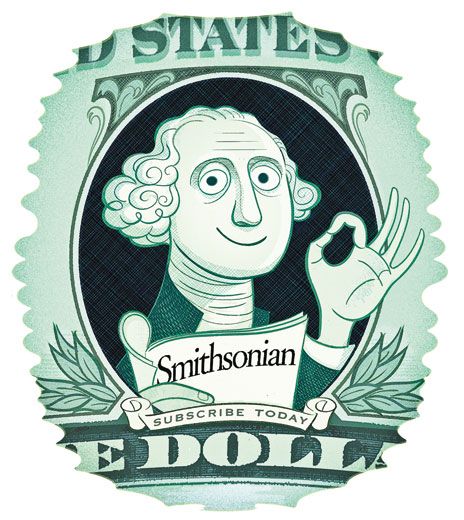On the Money
Advertisers discover the value of a dollar
January 1, 2015
From: Secretary of the Treasury
To: Director, U.S. Bureau of Engraving and Printing
Re: Advertising on U.S. Currency
Mr. Director:
As you know, in an effort to reduce our seemingly intractable national debt, President Rogers has authorized the sale of advertising space on U.S. currency. Needless to say, critics claim that this will debase and devalue this symbol of our national identity. While we take these concerns seriously, our goal is to maximize this tax-neutral opportunity for increasing revenue, within the bounds of good taste. To that end, we have drawn up some guidelines for implementing this policy:
• To avoid clutter, no more than one advertiser shall purchase space on the face of a bill. To avoid conflicts, advertisements for companies in direct competition with each other (e.g., Apple and Microsoft) shall not appear on the face and back of the same denomination.
• Advertising space shall be limited to 25 percent of the area of the bill’s face. While no marks or symbols from the original currency shall be eliminated, some may be reduced in size to create advertising space.
• No more than two of the corner numerals used to indicate a bill’s value shall be replaced by corporate symbols or logos (e.g., a silhouette of Mickey Mouse, the Nike swoosh).
• Dialogue bubbles bearing testimonials or endorsements by the historical personage depicted on the front face of the bill may be allowed on a case-by-case basis only. But no alterations shall be made to the image itself—no arched eyebrows or mouths formed into exclamatory O’s. The sole exception is the $100 bill, where, for a premium, renderings of Benjamin Franklin before and after the use of hair-restoration products have been approved.
• Likewise, no alterations shall be made to images of historic buildings and national landmarks. Signs, billboards and other structures (e.g., golden arches in front of the Lincoln Memorial) may be permissible, however, only if they obscure no more than 15 percent of the building or structure.
• Under no circumstances shall currency denominations be changed. (No $19.95 bills, for example.)
• Currency denominations may, in the course of time, take on nicknames—McDollars, Wal-bucks—but advertisers may not use these names on the currency itself.
We cannot overemphasize the necessity for this policy to be implemented with all due dignity and respect for the U.S. government and its currency, commensurate with maximum revenue enhancement.
Jim Courter is a writing instructor at Western Illinois University.
